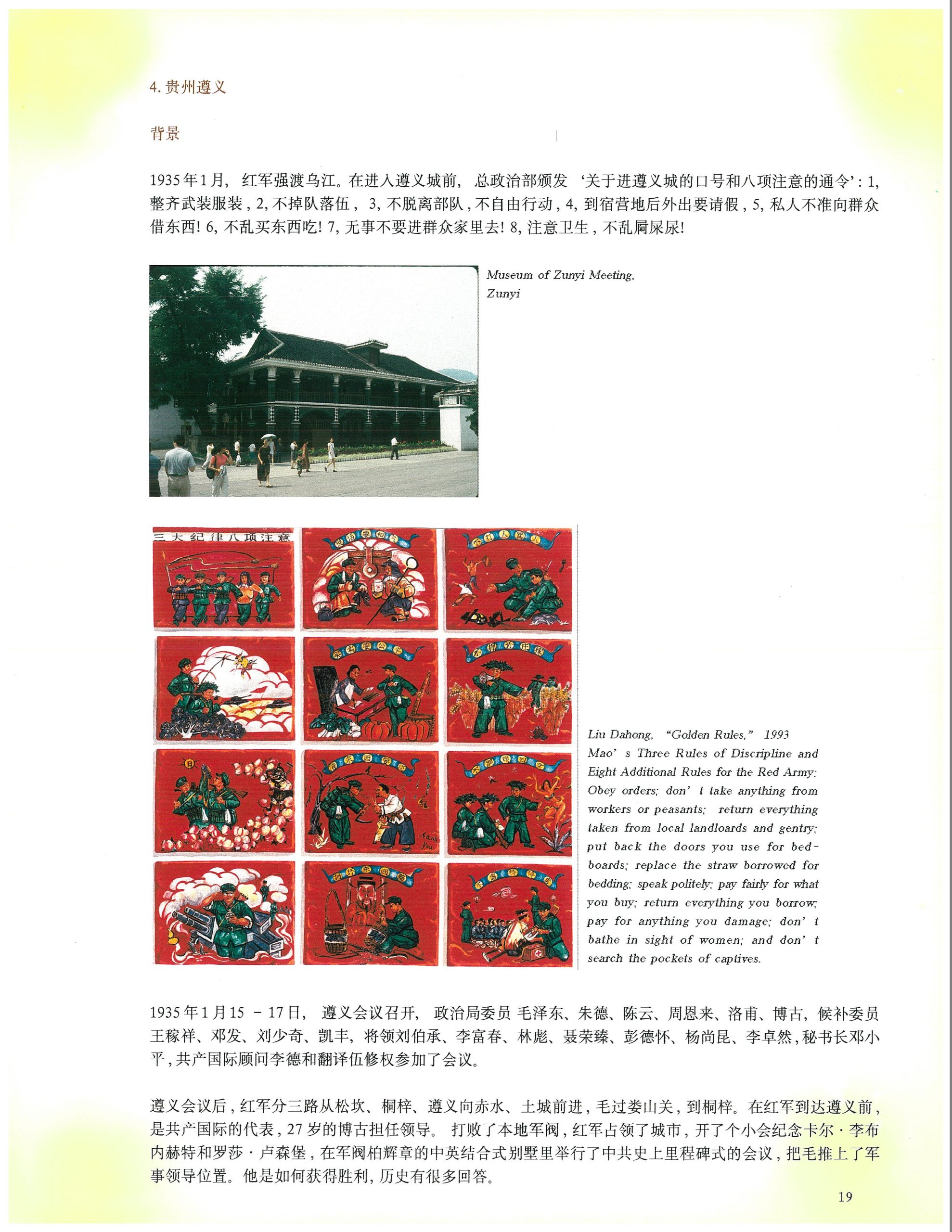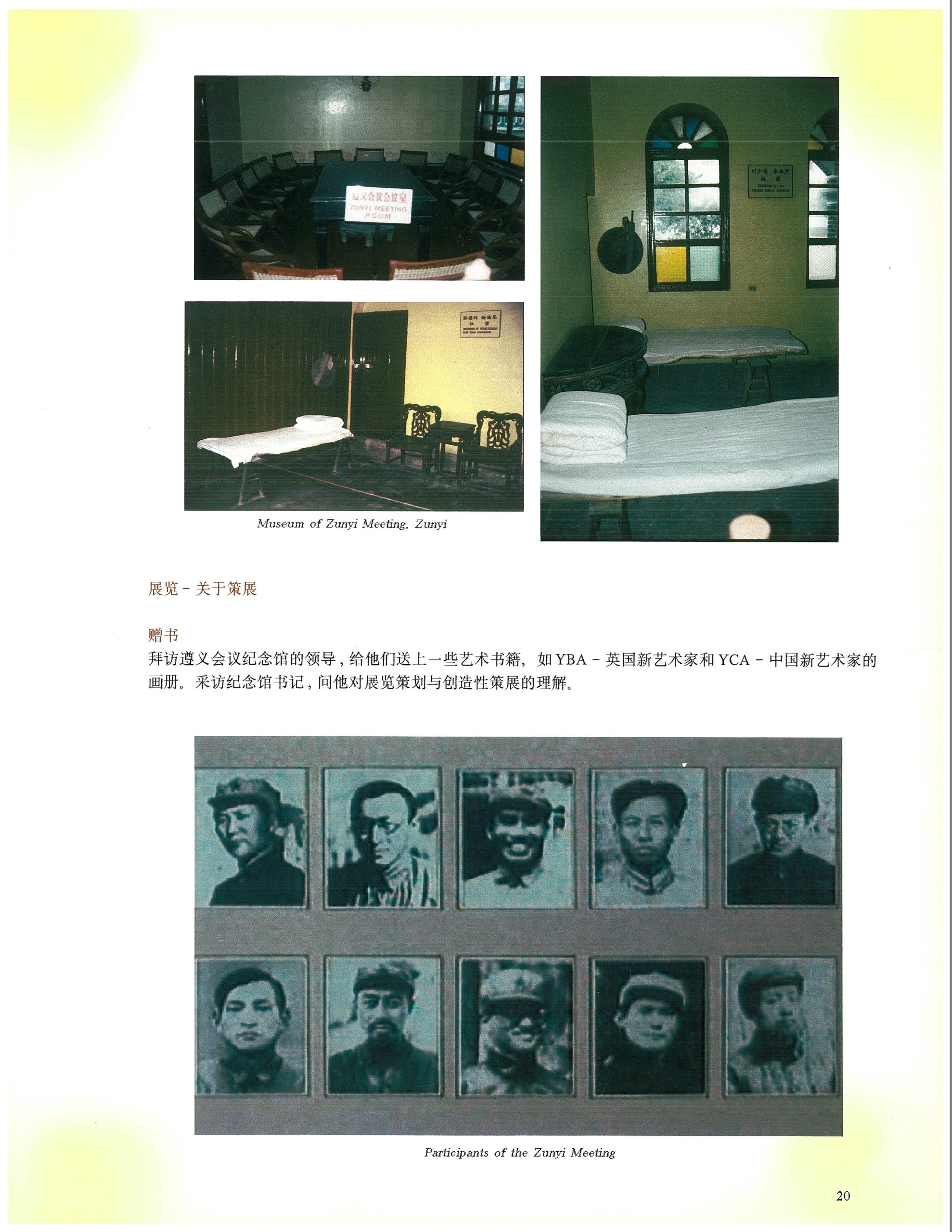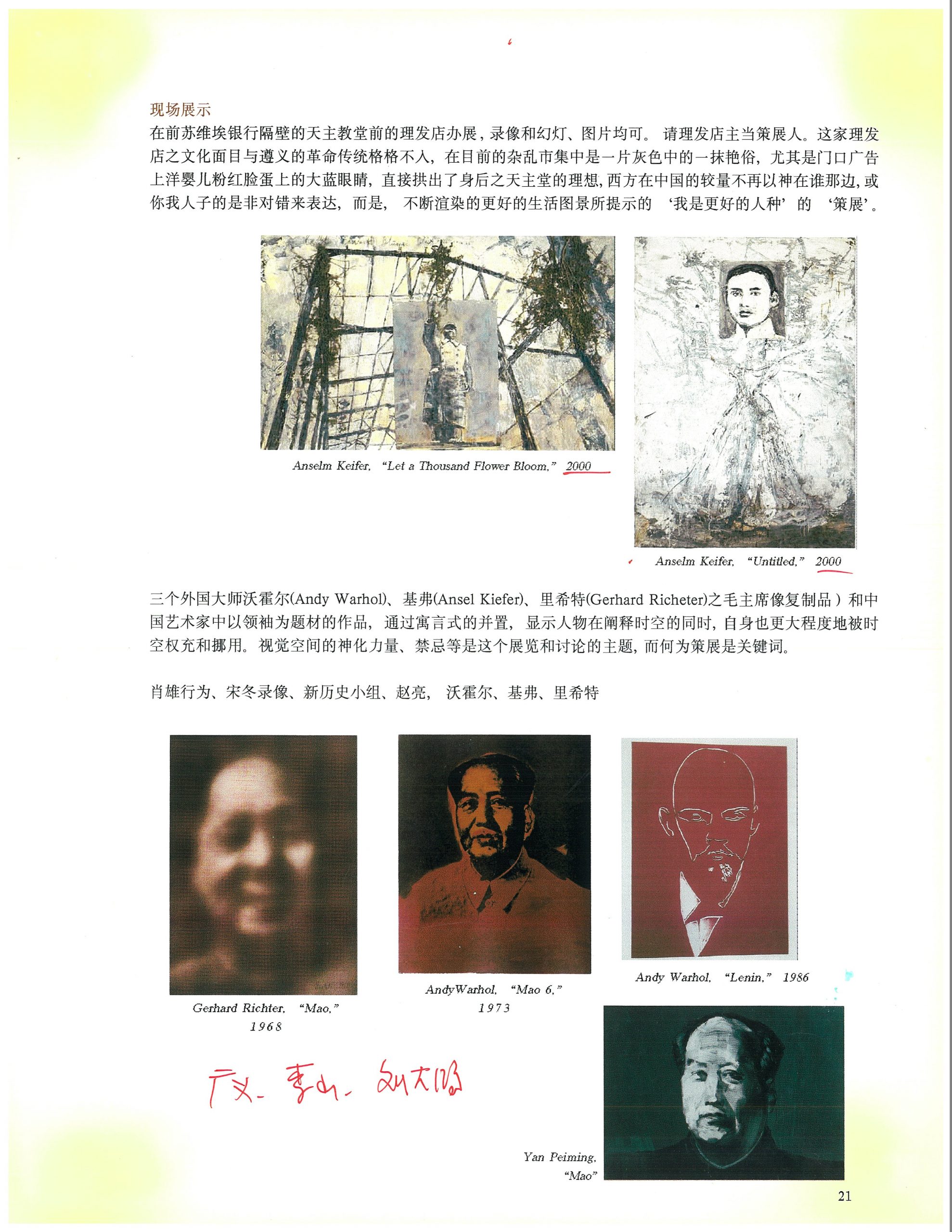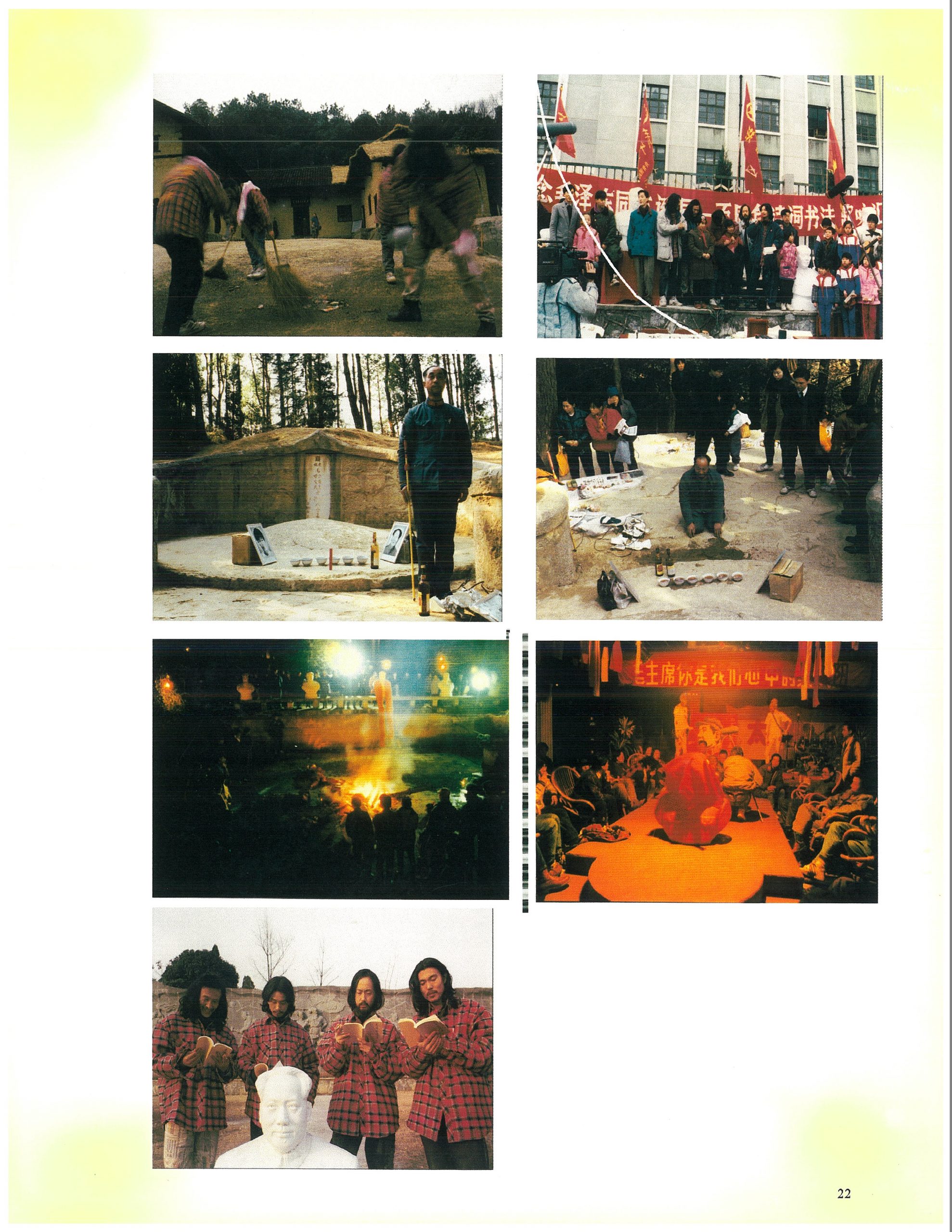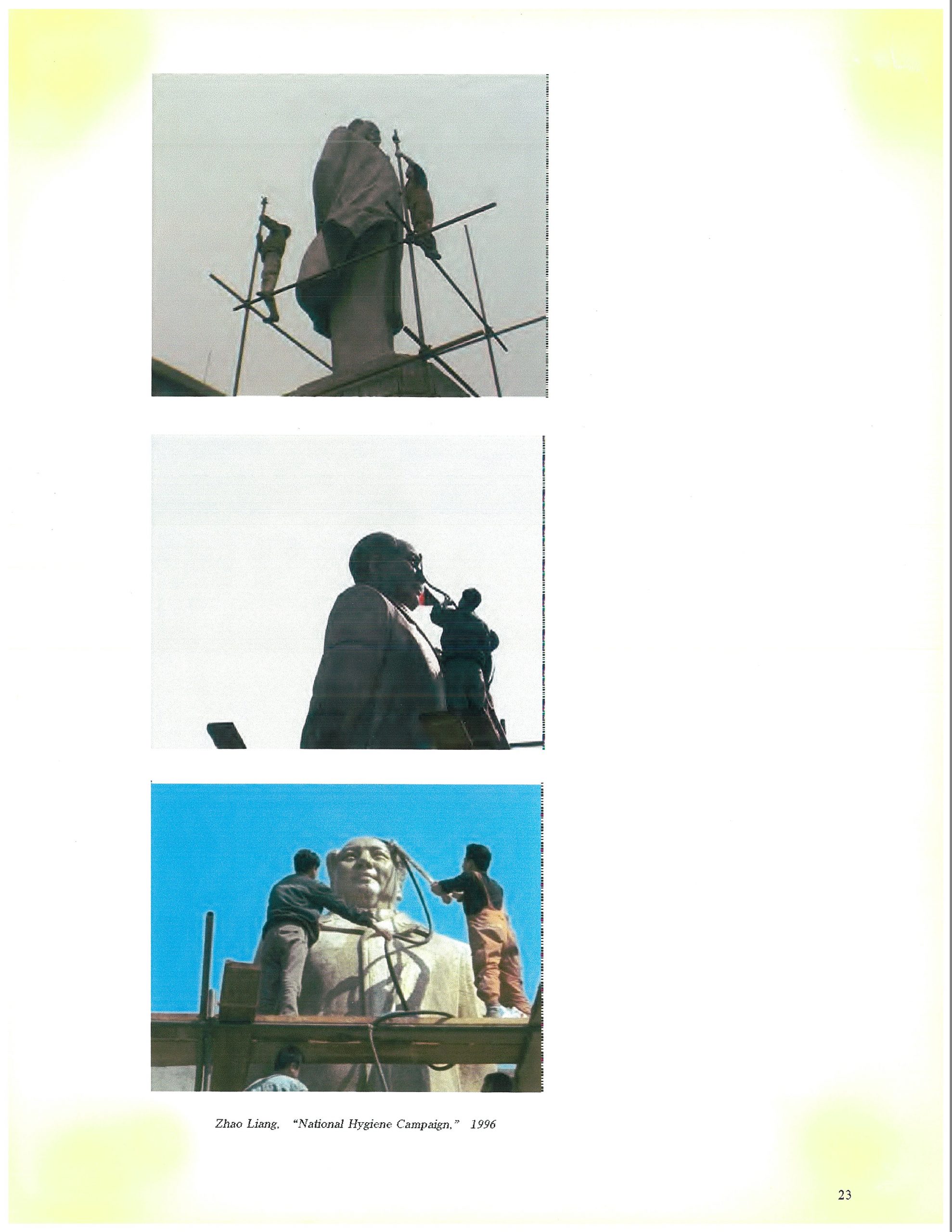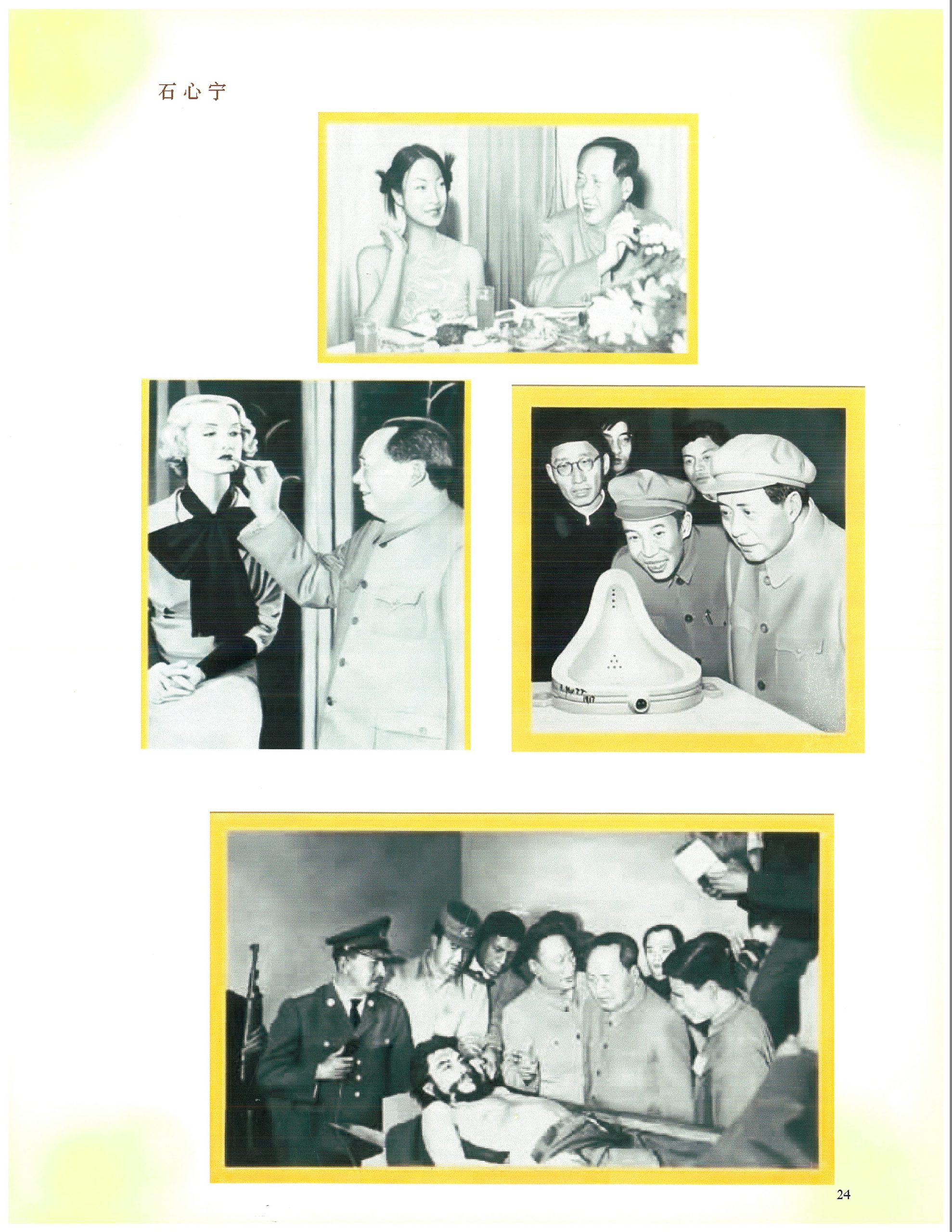Long March – A Walking Visual Display
作品《难民共和国》展在原中华苏维埃中央临时政府前展出-2-400x300.jpg)
Site 1: Ruijin, Jiangxi Province
Long March- A Walking Visual Display
Time: Jun. 28 – Jul. 7, 2002

Site 2: Jinggangshan, Jiangxi Province
Long March- A Walking Visual Display
Time: Jul. 8 – Jul. 12, 2002
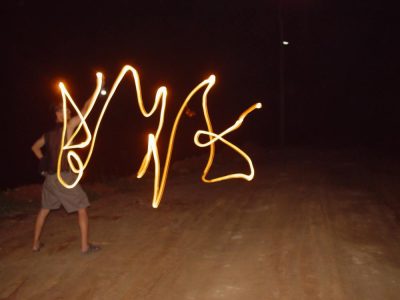
Site 3: Daozhong, Guangxi Autonomous Region
Long March- A Walking Visual Display
Time: Jul. 13 – Jul. 18, 2002
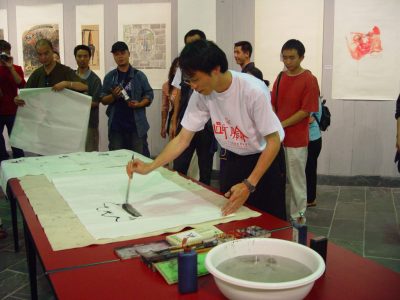
Site 4: Kunming, Yunnan Province
Long March- A Walking Visual Display
Time: Jul. 21 – Jul.22, Aug. 2 – Aug.5, 2002

Site 5: Lijiang, Yunnan Province
Long March- A Walking Visual Display
Time: Jul. 23 – Jul. 27, 2002
Jul. 31 –Aug.01,2002
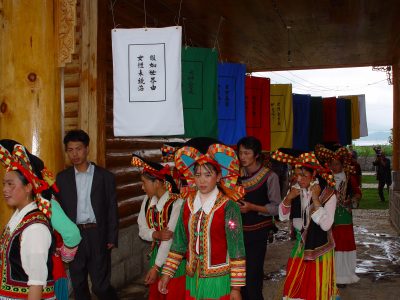
Site 6: Lugu Lake, Yunnan/Sichuan Provinces
Long March- A Walking Visual Display
Time: Jul. 27 – Jul. 30, 2002
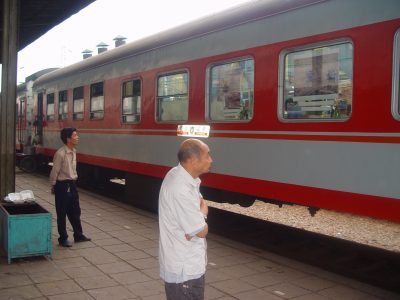
Site 7: On the Train between Kunming and Zunyi
Long March- A Walking Visual Display
Time: Aug. 6, 2002
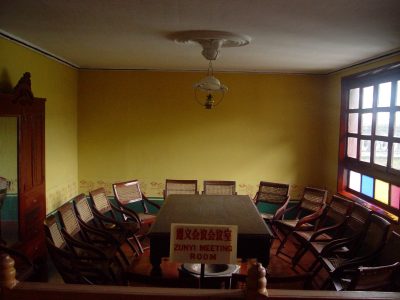
Site 8: Zunyi, Guizhou Province
Long March- A Walking Visual Display
Time: Aug. 7 – Aug. 12, 2002
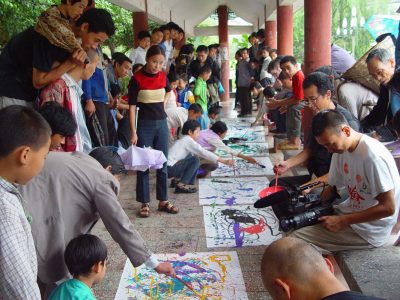
Site 9: Maotai, Guizhou Province
Long March- A Walking Visual Display
Time: Aug. 13 – Aug. 15, 2002
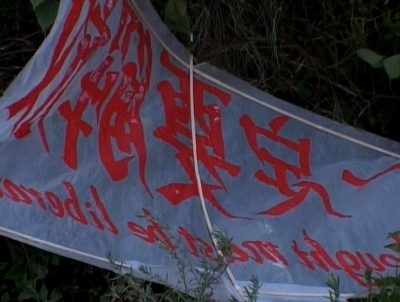
Site 10: Xichang Long March Satelite Station, Sichuan Province
Long March- A Walking Visual Display
Time: Aug. 16 – Aug. 21
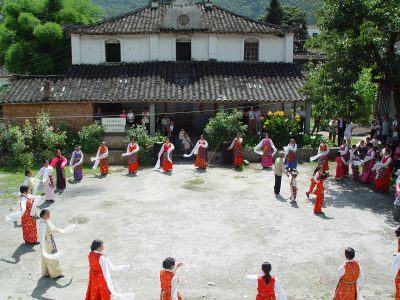
Site 11: Moxi, Sichuan Province
Long March- A Walking Visual Display
Time: Aug. 22 – Aug. 27, 2002
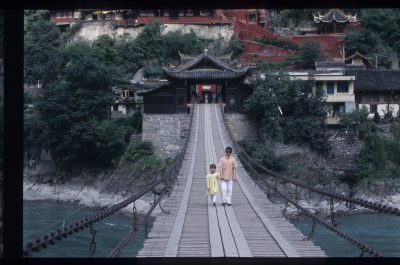
Site 12: From Anshunchang to Luding Bridge
Long March- A Walking Visual Display
Time: Aug. 28 – Sep. 1, 2002
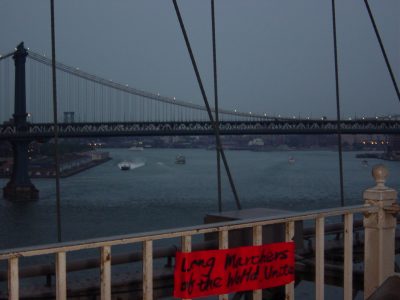
Works made along the Long March
Long March- A Walking Visual Display
Time: 2002
Artists: Qu Guangci, Qiu Zhenzhong, Song Dong, Yin Xiuzhen, Wang Bo, Qin Ga, Qiu Zhijie, Ingo Günther, Jiang Jie, Wang Jingsong, Yao Ruizhong, Shao Yinong, Mu Chen, Xiao Lu, Shen Meng, Xiao Xiong, Ding Jie
Site 8: Zunyi, Guizhou Province
Long March- A Walking Visual Display
Time: Aug. 7 – Aug. 12, 2002
Curatorial Plan: Historical turning points, Mao establishing authority in one meeting – variations in the value placed on the individual and the collective among different cultural systems—Che Guevara/Jackson Pollock
Route: Zunyi, Guizhou Province
Time: 2002.8.7-8.12
August 7:Zunyi
August 8:Red Army Mountain, Zunyi
Guan Yuda et al. The Long March Ceremony, performance
August 9: Zunyi Cultural Center
Collective Painting – Little Swallow (Zhao Wei)
August 10 – 11: Jincui Lake Vacation Village
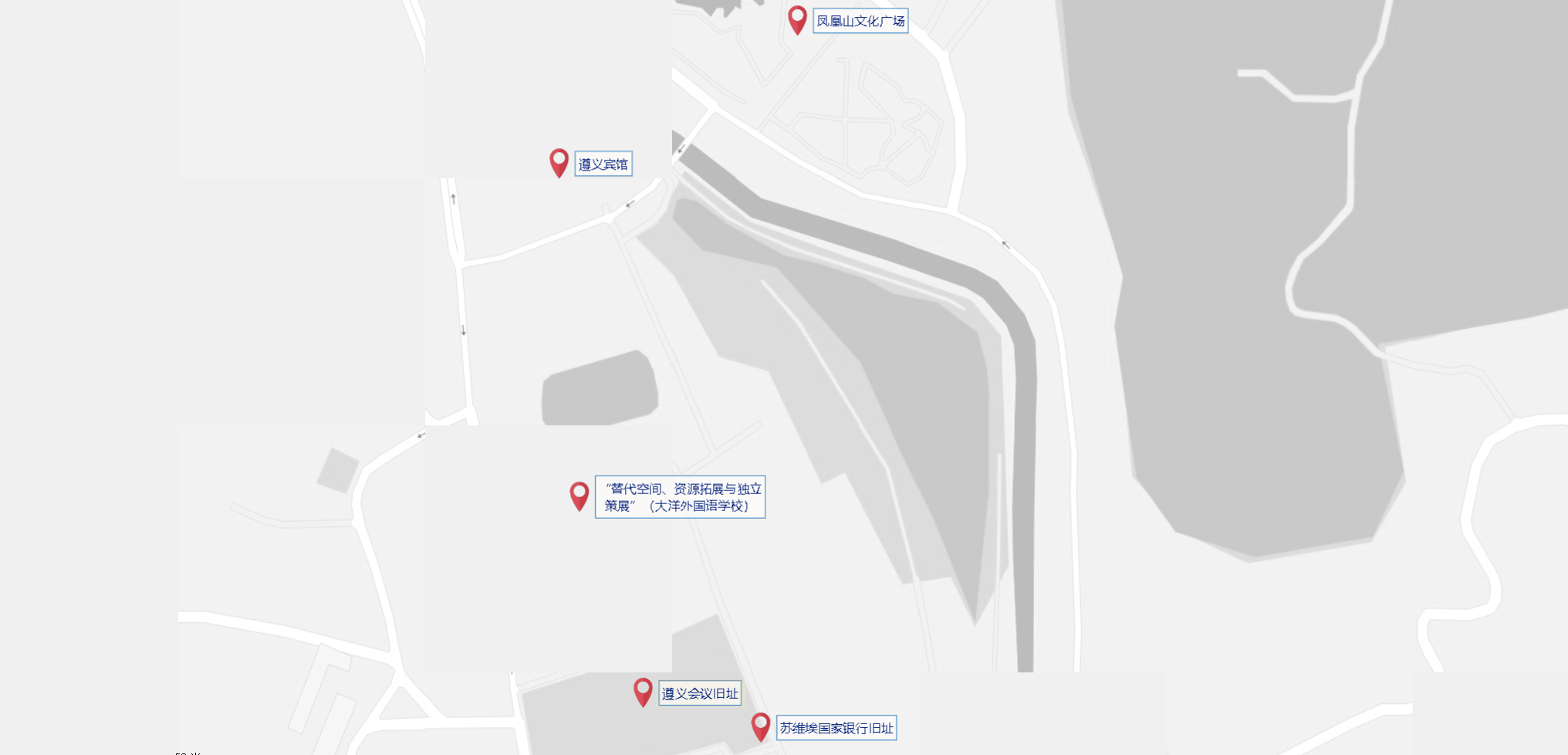
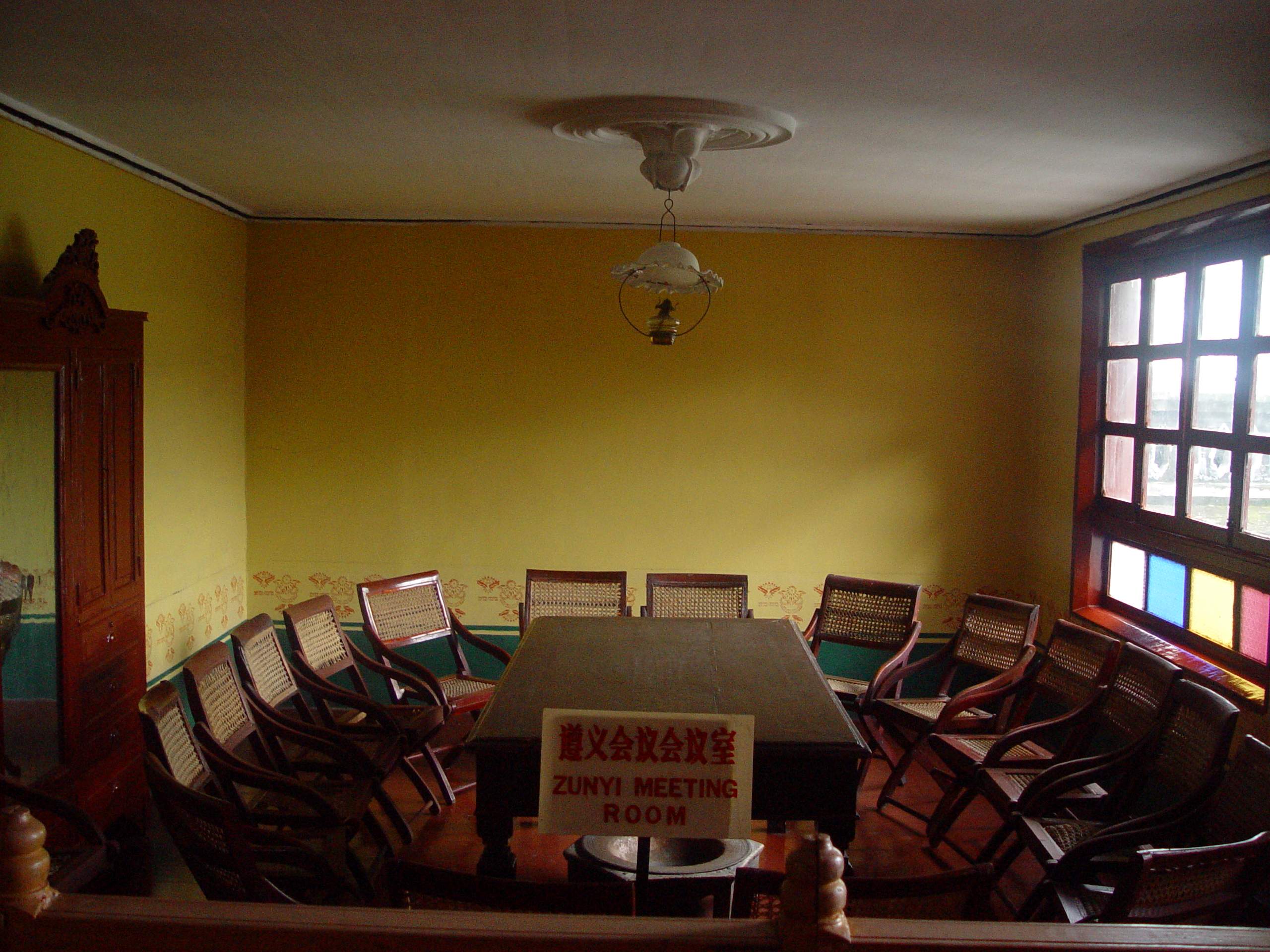
August 7
The group met local artist Wang Jun and five of his companions in the hotel, and agreed to participate in the welcoming ceremony the next morning at the Red Army Martyrs’ Memorial atop Red Army Mountain.
Lu Jie stayed in the hotel and kept discussing their expectations for the conference. Qiu Zhijie, Lisa Horikawa, and Shen Xiaomin look for ideal places in Zunyi to realize Long March art events.
The conference could no longer be held in Zunyi Hotel as the local friend of critic and curator Gu Zhenqing retrieved his help because of his misunderstanding about contemporary art. The curatorial team found “Big Ocean Foreign Language School” on the third floor of a billiards hall. Teacher Huang, director of the school offered the space up for free use. Long March decided to divide the meeting originally scheduled for Zunyi into two parts. The part to be held at the Big Ocean Foreign Language School would discuss “Alternative Spaces, Independent Curating, and the Development of Resources” as this place was located directly across from the former Red Army Bank.
A hair salon catering only to babies converted from a front door space of a Christian church refused Lu Jie’s request of collaboration. Taiwanese artist Yao Jui-chung also arrived in town, prepared to travel with the marchers for three weeks, through to Luding Bridge.
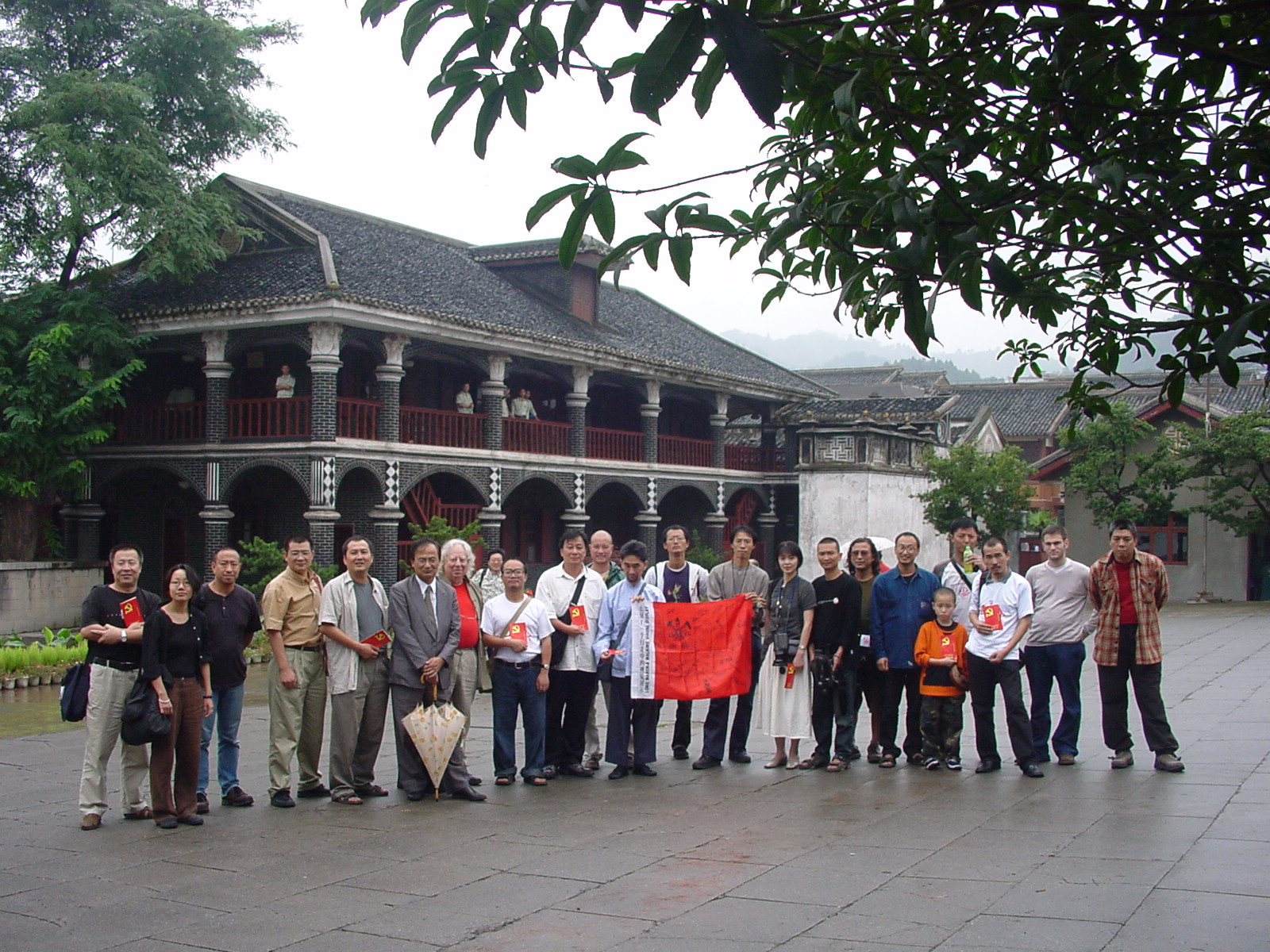
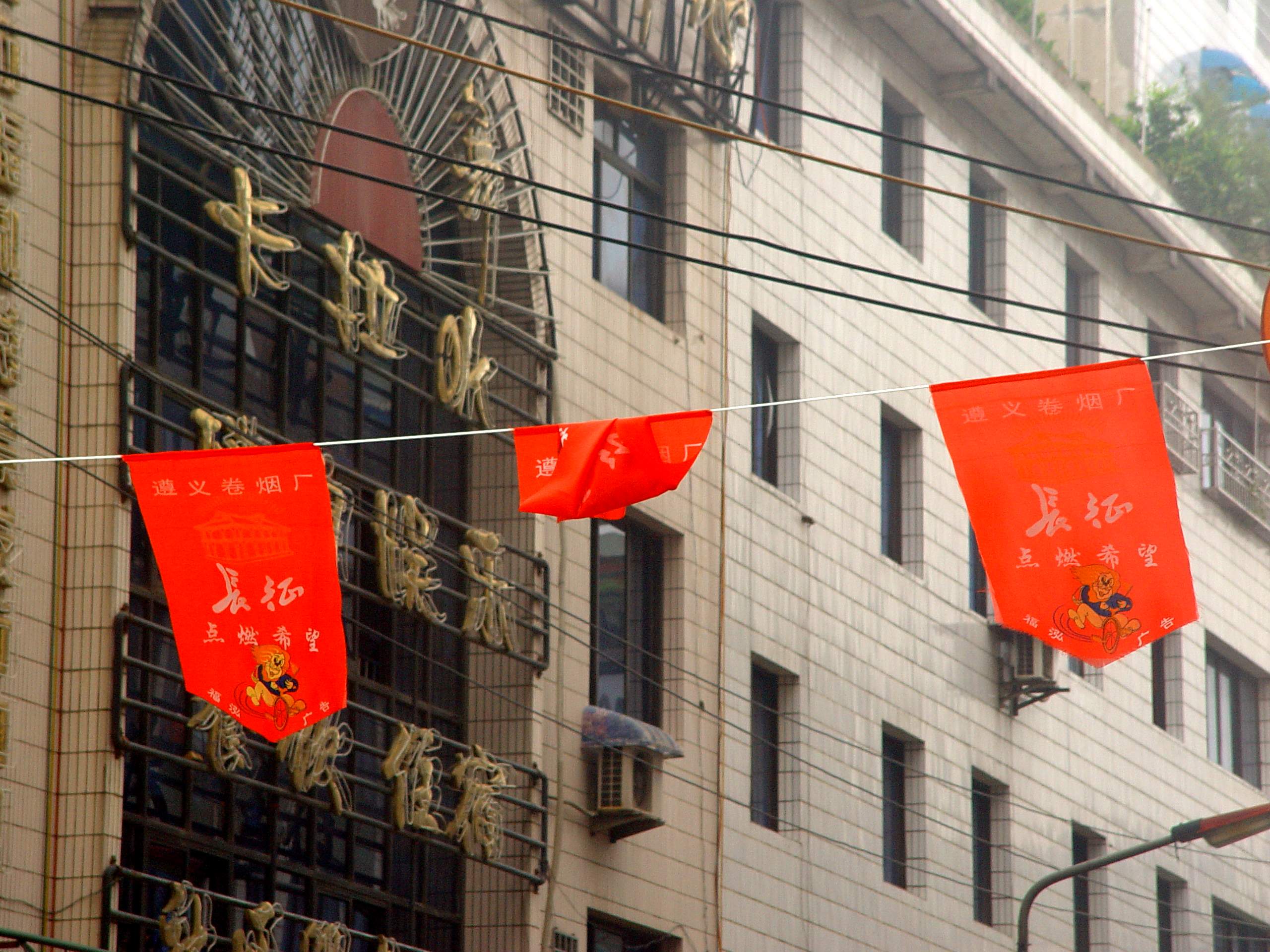
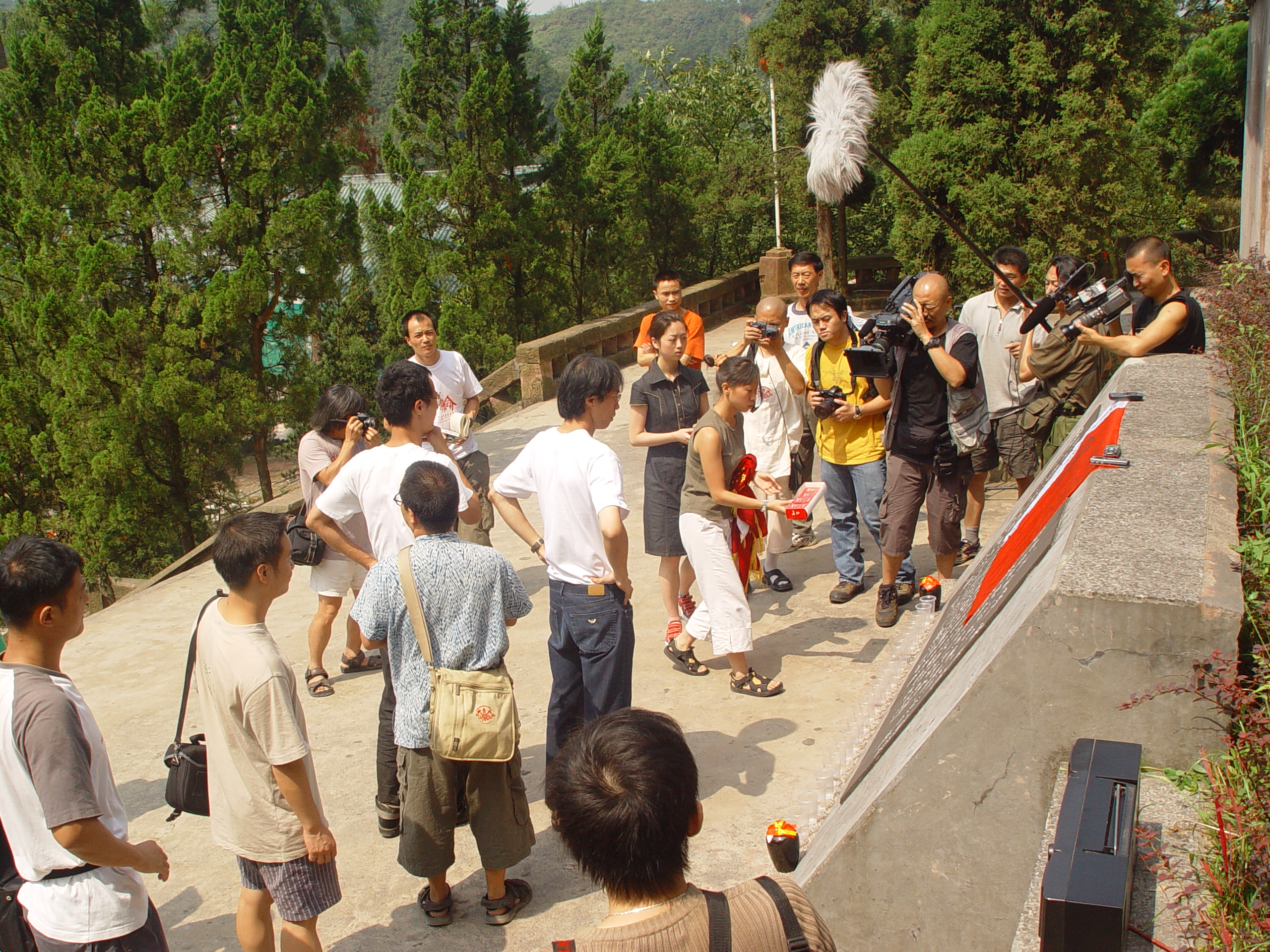
Site: Red Army Mountain, Zunyi
August 8
At 10:00, Chen Qiji, Wang Jun, Guan Yuda and others arrived at the hotel entrance, ready to lead the group to Red Army Mountain. The small square atop the mountain contained a statue of Ye Yushan and busts of three Red Army martyrs on pedestals arranged in a circle. On the memorial stele was inscribed a line of Deng Xiaoping’s calligraphy: “The Red Army Martyrs will never decay.” Atop the stele was a metal hammer and sickle. The summer foliage of the square provided a shady canopy for drinking tea. This tree canopy was actually the logo of the local Long March brand cigarettes, which are ubiquitous in Zunyi.
Guan Yuda et al. The Long March Ceremony, performance
The welcoming ceremony put on by Guan Yuda and others also bore a connection to Long March cigarettes, as the activity mainly involved the presentation of tobacco, alcohol, and a flag from Guizhou artists to the Long Marchers, followed by the reading of an open letter. Everyone chose the space atop the mountain, behind the memorial, and in front of the Deng Ping Martyr’s Tomb in which to hold the ceremony.
Representing the Guizhou artists, Guan Yuda read aloud the open letter the the Long March curators and group, entitled “The Long March and Contemporary Art ‘Sent Down.’” In addition to welcoming the Long March, the letter also expressed doubt about its curatorial methods; its writers welcomed the Long March as if it really were a process of being “sent down” to the countryside in the manner of the Cultural Revolution. The letter was also signed by famous 1980s Guizhou painters Pu Guochang and Yin Guangzhong, neither of whom were present.
After the welcoming ceremony had concluded, Beijing artist Wang Chuyu invited Guan Yuda and others to participate in his work Constitution. The Guizhou artists each chose a passage they found particularly interesting, and read it in their thick Guizhou accents.
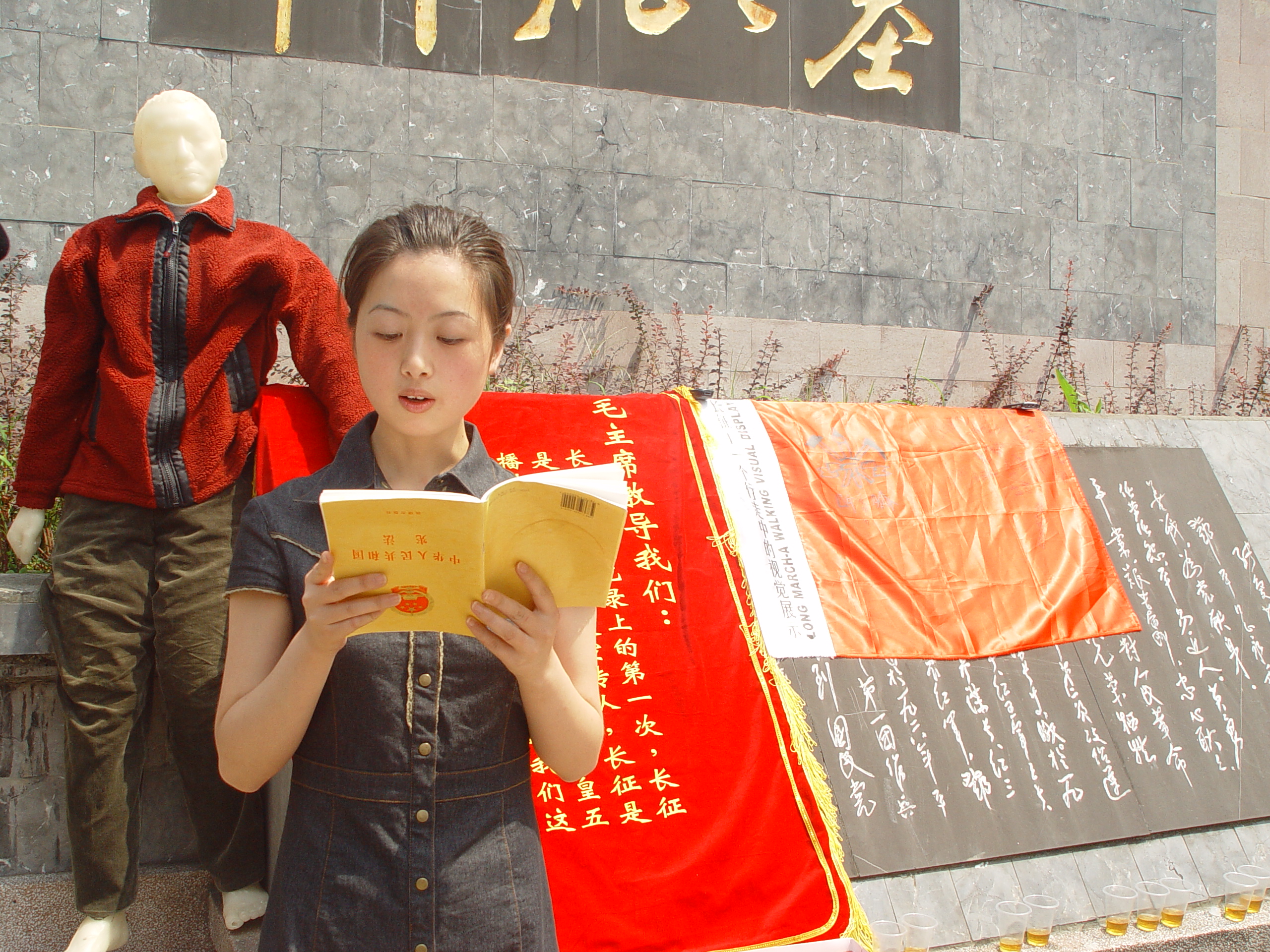
Collective Painting – Little Swallow (Zhao Wei)
August 9
The Long March curatorial team had originally decided to organize a Long March Event to take place at Zunyi, in which the experts and scholars in town for the meeting, the members of the Zunyi Artists’ Association, and ordinary viewers of the exhibition would create a massive “leader portrait.” The original image would be enlarged and separated into many small squares, and the participants would each paint a square in the style and color of propaganda painting. All the painters working together would create a complete image, and the fruit of their labor would be exhibited in the local art museum. This activity would memorialize the groups of artists who produced “leader portraits” in China’s socialist past, and recall enlightenment-style artistic education. In producing a leader portrait, the Long March could discuss new forms of revolutionary memory and education in a cultural background quite different from that of the original portraits.
After reaching Zunyi, in order to more deeply connect with universally idolatrized cultural symbols, instead of merely borrowing images from revolutionary culture which may have lost their relevance, the curatorial team decided to use the image of a pop or movie or pop star instead of a leader. The decision came down to Leonardo DiCaprio or Chinese starlet Zhao Wei, and in the end, Zhao Wei was chosen.
In their original scheming, the curators had hoped that by creating the painting outdoors, they would attract a huge number of onlookers, some of whom would partake of the creative process themselves. But because the work was temporarily moved inside, there were far fewer viewers than anticipated. Guan Yuda and other Guizhou artists pretended to be specially employed for the project, and assisted in drawing some interested passersby.
Still, the expected plan whereby interested amateurs would be naturally attracted to the project changed into one whereby they were specially invited. Security guards and workers from the construction site near the Fenghuang Mountain Culture Center, along with little girls reading the newspaper by the entrance became part of the painting ranks. Zhao Wei was the idol of these young girls.
Dividing and painting was quite easy, but piecing the work together required more effort. As the masses moved, chaos became inevitable. Each person took a piece of the original photo and a large sheet of paper, but often lost the number of their piece upon completing work. Qiu Zhijie, on-site managers and artists from Sichuan Academy of Fine Arts, Li Chuan and others prepared the portrait of Zhao Wei and assembled it into a giant image.
The curatorial crew and comrades climbed a steep slope to reach the peak of the city, overlooking the mountain landscape and streets below. This is where the annual Red Army dance takes place. Women from mixed generations – the oldest dressed in traditional costume, the youngest dressed in jeans and sweaters – dance together while a thirteen year-old boy plays a traditional wooden flute in the center. The women dance before lush mountains juxtaposed with the city below, and framed by a monumental fifty-foot high Cultural Revolution-era bronze sculpture. During the dance, the curatorial crew erected a Long March flag that bore the New English Calligraphy logo designed by Xu Bing. After the dance, Lu Jie distributed propaganda to the dancers. Town officials quickly intervened so Lu Jie quickly collected the propaganda and the troops headed back to Lijiang.
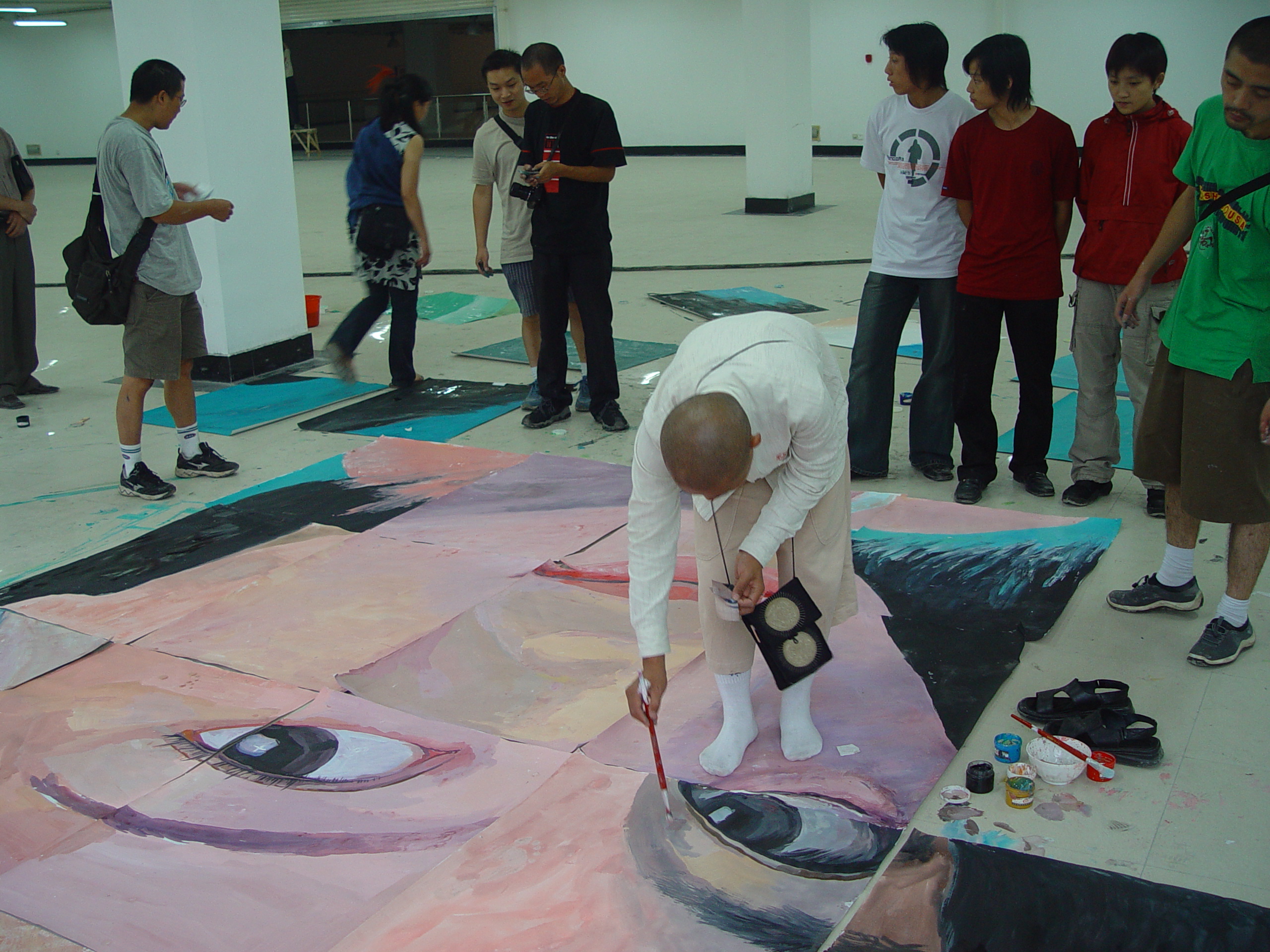
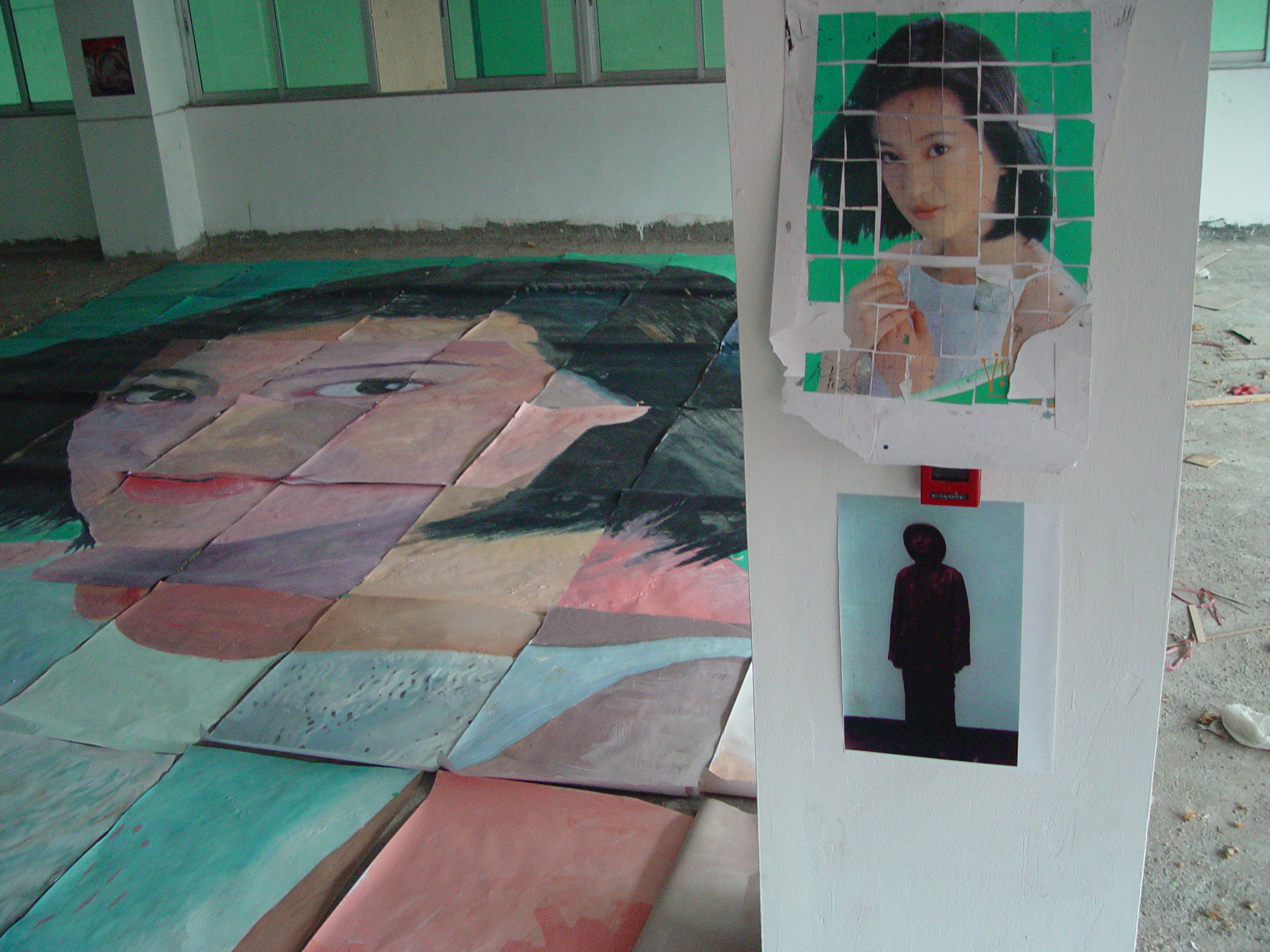

Wang Chuyu, Democratic Long March, performance
August 11
The last part of the afternoon meeting was Wang Chuyu’s performance work Democratic Long March. In his proposal, Wang Chuyu pointed out that Lu Jie and Qiu Zhijie had not been democratically elected as curators of the Long March, and required that they be voted upon on-site. To this purpose, Wang Chuyu printed a series of ballots and wrote a strict set of election rules. In this election, there were no particular candidates, or rather, everyone present was a potential candidate. The first round would choose five of those present to make speeches, and the second round would choose two winners from those five.
At 6:30 that evening, Wang Chuyu read the election rules and the voting began. Participants neatly filled out their ballots and lined up to drop them in the box. The atmosphere was jovial until the ballot-counting began, at which point things got tense. Some participants asked Lu Jie if the exercise was real, if he would genuinely resign his post if not selected. How had they dared to accept this proposal, people asked. The initial voting was scattered—of the fifty-plus participants, 32 received one or more vote. The majority of these however received only one or two votes. Those receiving multiple votes included Lu Jie, Qiu Zhijie, Johnson Chang, Wu Meichun, and Ye Yongqing. These five became the candidates for round two, and were thus required by Wang Chuyu to give a candidacy speech.
Wu Meichun’s speech was an appeal that people not vote for her. She said: “I saw the presentation last night. Lu Jie and Qiu Zhijie are ironmen. I am not an ironwoman. I can’t take it, I couldn’t do this.”
Ye Yongqing said: “Those two have run the thing up to now, and they’re too tired to go on. I’m quite willing to usurp the fruits of their revolution. If everyone goes on the Long March with me, we’ll eat well and drink well, things won’t be so tough as they are now.”
Johnson Chang said: “I’ll run as their assistant.” (One ballot for the Hong Kong gallerist listed a reason: ”because he has money.”
Lu Jie said that he hoped someone else was elected, that way he wouldn’t have to continue spending money to finish the project.
Qiu Zhijie said that he needed to keep on going because he couldn’t stand to see Lu Jie running the project alone. “Besides,” he said, “I have a great digital camera, and curators must be able to take good pictures!”
The speeches were full of jokes, but again, when the ballots were counted, the mood of the room grew tense.
The result of the election? Lu Jie and Qiu Zhijie were chosen to continue on as curators of the Long March, and the gathered group warmly applauded their victory. Wang Chuyu’s subversive machinations had actually legitimized the standing curators of the project..
Xiao Xiong, Enter and Exit, performance/installation
At the site, the group encountered the artist Xiao Xiong, whose work was to walk the route of the Long March in reverse, from Yan’an to Ruijin, exchanging an article with a passerby each day as a way of exploring ideas of exchange and memory. In the room where the actual Zunyi Meeting is said to have occurred, he traded an article for Johnson Chang’s cigar holder, and went on, alone. Upon seeing this, curator Feng Boyi exclaimed that because of the Long March, artists in China had rediscovered a new energy.

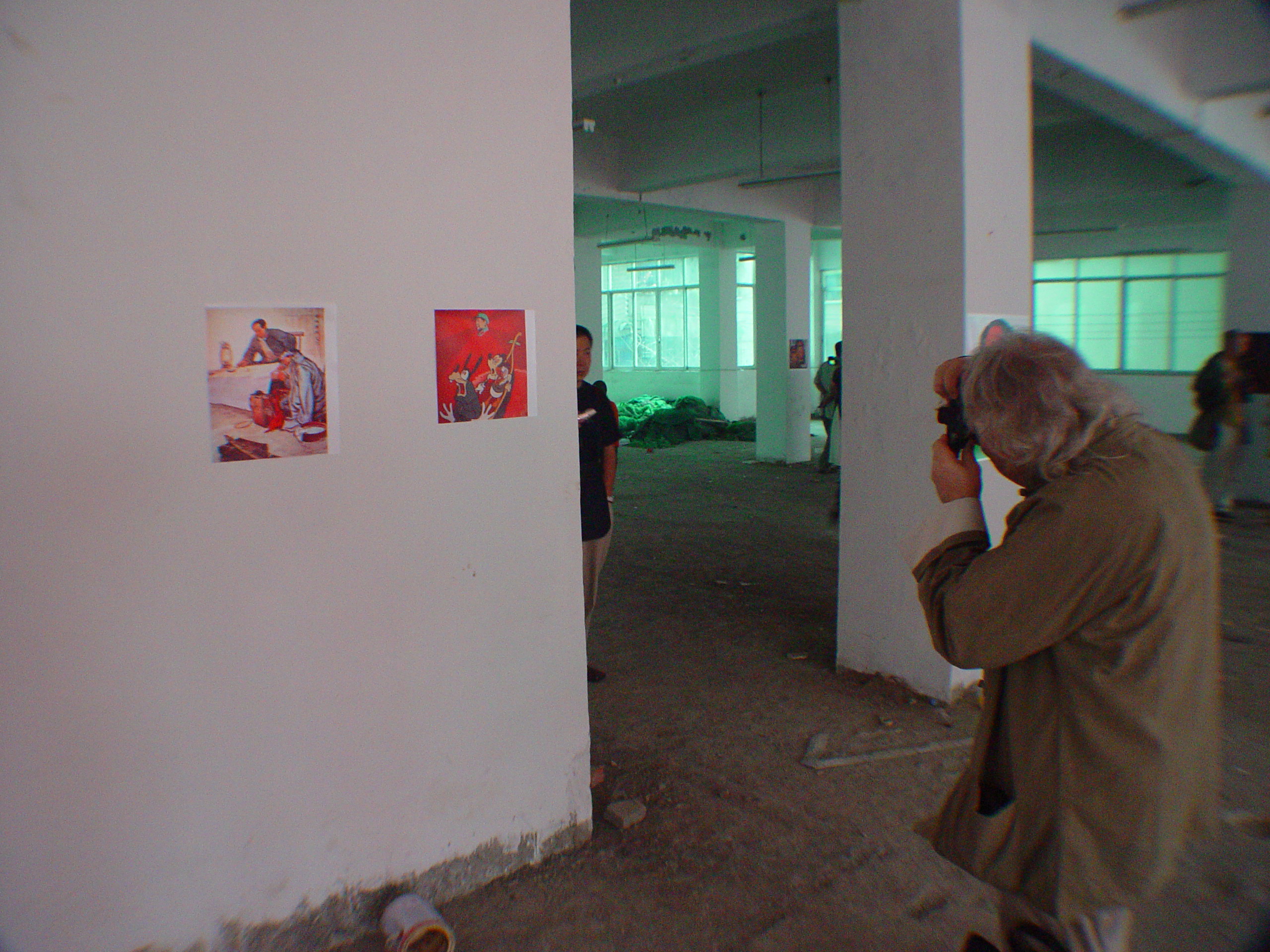
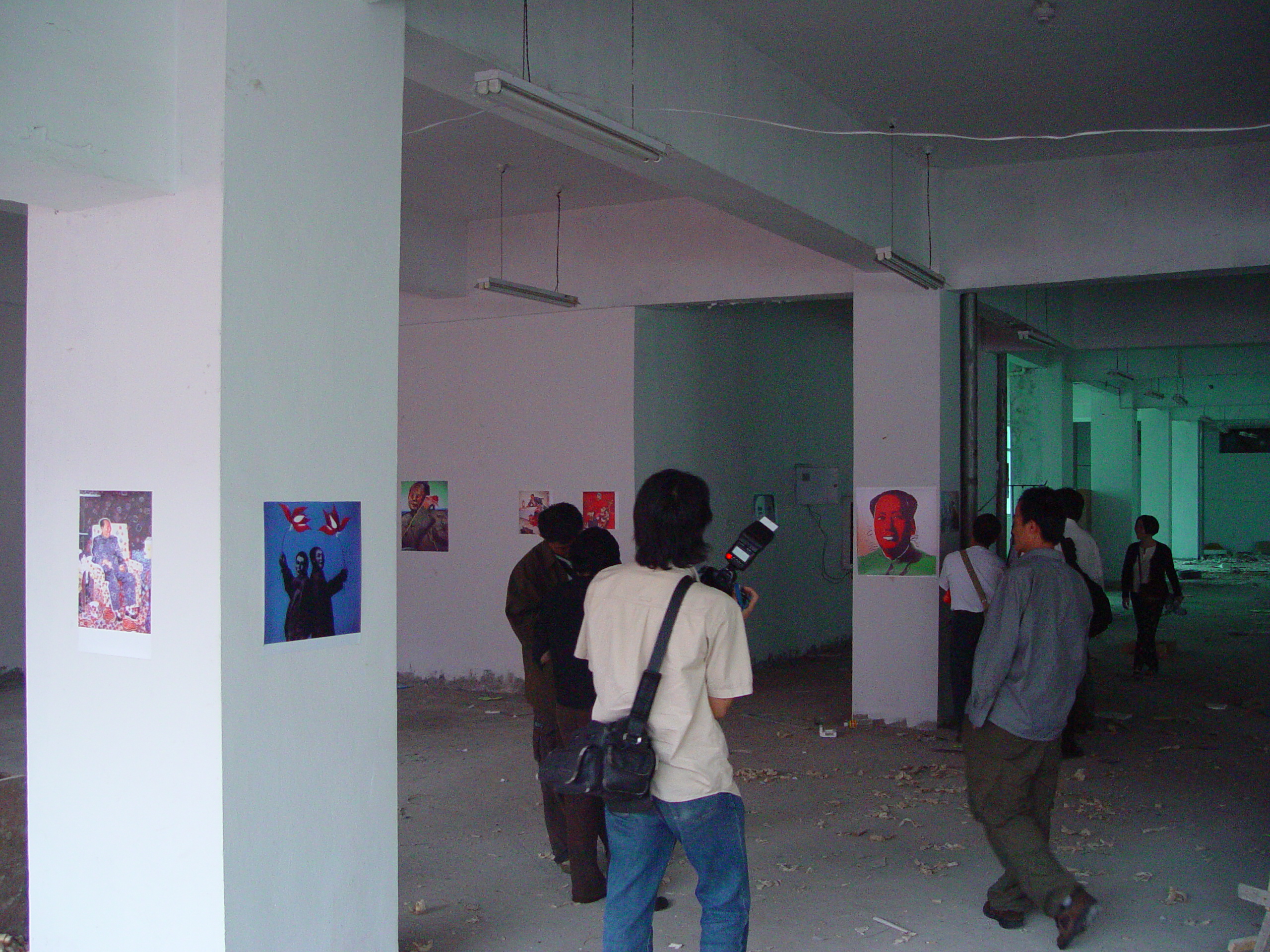
Exhibition of Leaders’ Portraits by international and local artists
August 12
One man called Philip Tinari, known in Chinese as Tian Feiyu, a young American critic, joined the group. During a lunch at the conference in Guiyang, he asked Qiu Zhijie if he could remain on the Long March route and it is said that at the time Qiu agreed. The next day in Zunyi, Lu Jie found the extra member and asked Qiu Zhijie, who categorically denied having agreed to Tinari’s accession. Phil, hereafter known to the Marchers as “Fei-er” (the literal translation of “Phil”), became a Long Marcher. Phil began to work for the Long March, helping translate and edit materials for the English website, becoming an important figure in the detachment.

